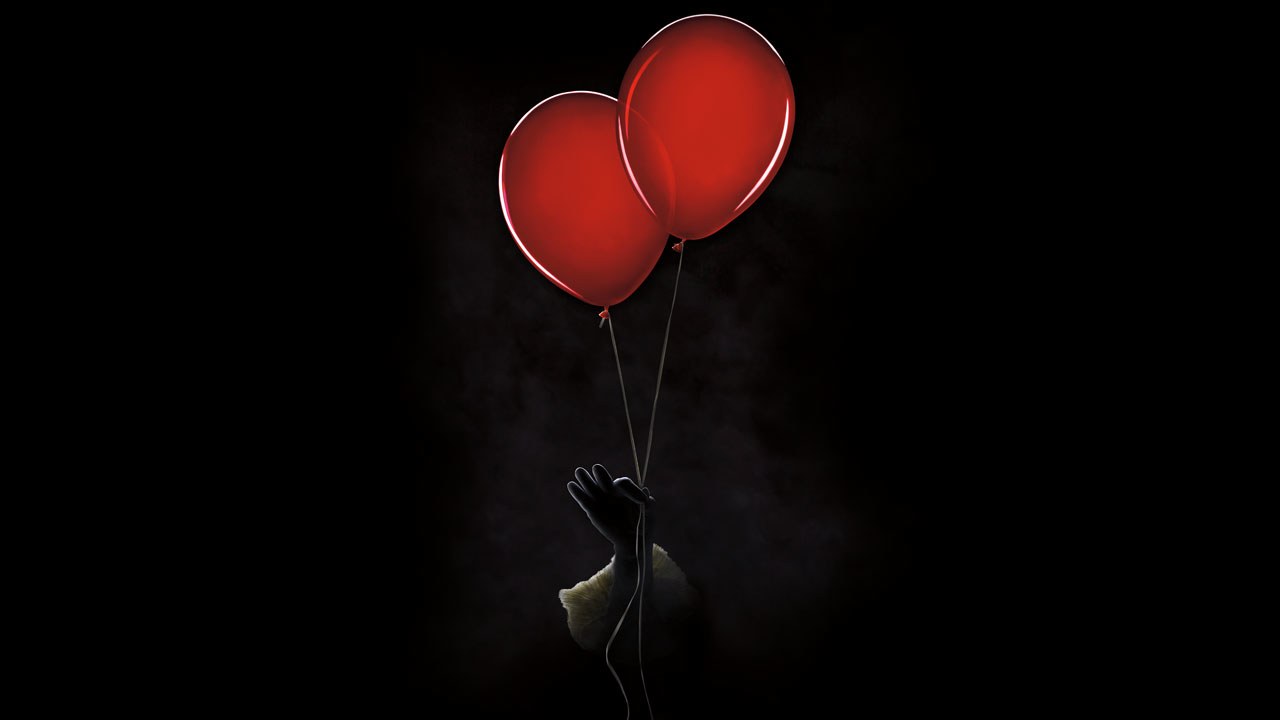Two years ago, what was frequently declared the best Stephen King horror adaptation yet was released in theatres, that being It. There have certainly been plenty of other highly successful Stephen King adaptations from both a critical and commercial standpoint too, most notably Misery, The Shawshank Redemption, Gerald’s Game and The Green Mile, and that’s before considering that It was previously adapted as a fairly iconic two-part miniseries on ABC back in 1990. In terms of packing in all of the scares, tropes and character drama that most defines the bulk of Stephen King’s beloved literary works however, the 2017 cinematic adaptation of It seemed to nail all of it, in turn joining the Oscar-winning Get Out from that same year in kickstarting a heightened demand for blockbuster horror movies in recent years.
The problem however is that It was only half of the story first brought to audiences in its 1986 source novel and 1990 miniseries adaptation. There was still an entire second half to Stephen King’s original tale of predatory clown monsters and small town superstition that had yet to make the leap to the big screen, which would be promised in this year’s newly-released follow-up movie, It: Chapter Two. Whereas the original It movie focused on its lead cast being children, growing up in the twisted town of Derry, Maine during the late 1980’s, the sequel fast-forwards to the mid-2010’s, where the original child protagonists are now in their early 40’s, and are subsequently called to reunite in Derry, after the killer clown creature, Pennywise returns, having not actually been destroyed by the so-called, “Losers Club” when they were kids, as previously believed.
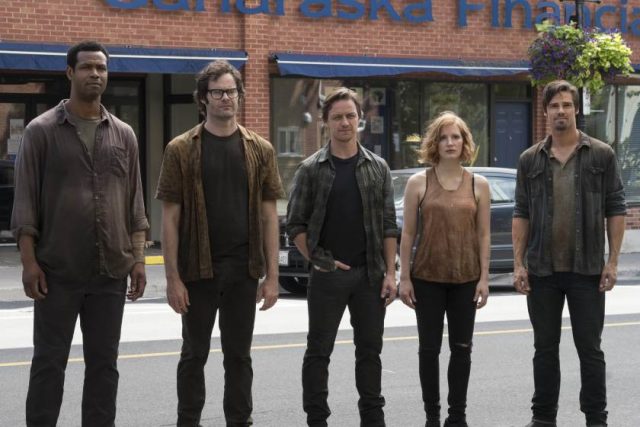
It: Chapter Two provides the resolution to this new big screen take on It that audiences were eagerly anticipating, following the highly enjoyable and satisfying final product of the first It movie, but there was also noticeable anxiety surrounding these fan expectations. This is because It: Chapter Two is being forced to almost exclusively work with the less effective adult personalities from Stephen King’s original novel, as well as the infamous, widely-disliked ending, which even becomes the meta inspiration behind a running gag with one of the characters in this very movie. It may be inevitable and predictable in that case that It: Chapter Two is noticeably inferior to its 2017 predecessor. It: Chapter Two nonetheless remains among the better Stephen King adaptations, and still manages to outclass this year’s shaky Pet Sematary remake as well, but its overlong runtime and more lacklustre horror elements also leave it falling shy of its potential, even if the ending sucks a bit less this time.
Character and dialogue is a big focus in It: Chapter Two, to the point where far more of this sequel is dedicated to exploring the psychologies of the adult Losers Club, rather than the actual horror and dread behind Pennywise. The original It leaned more heavily into the plague of the literal monster menacing Derry, but in It: Chapter Two, the adult protagonists’ own inner demons more frequently take center stage, with their childhood innocence having now ebbed away after their repressed memories of Derry are pushed into their sub-conscious by the town’s evil influence. This relatable despair and struggle behind the less-than-glamourous adulthood for the Losers Club quickly becomes the main draw of this second movie, particularly with a very well-chosen cast to bring it all together.
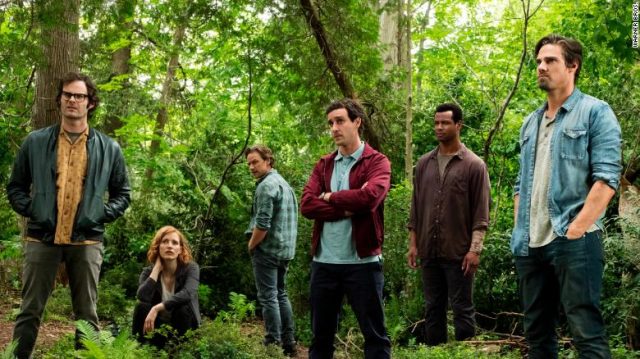
Bill Skarsgard remains a fantastic standout as Pennywise, naturally, even if the demonic clown felt a lot scarier during the first movie. Skarsgard’s creepy, twisted performance still makes Pennywise a force to be reckoned with though, as well as one that could still feasibly be trusted by children, with the prey of Pennywise now more commonly being the oblivious modern children of Derry, rather than the adult Losers Club, who are fully aware of how dangerous and sinister Pennywise truly is. Fortunately, even if the adult leads now rarely feel like they’re in actual danger from Pennywise, who clearly prefers to feed on children, the Losers Club’s adult versions are still well-performed for the most part, with Bill Hader’s Richie and James McAvoy’s Bill being particular standouts among the ensemble.
Interestingly, the adult Richie’s character feels the most noticeably altered from the previous novel and miniseries, with several key story changes being present in this movie that make Richie’s character feel the most fresh, fun and interesting of the bunch, even for people who are already very familiar with the story of It from the novel and/or miniseries. Hader’s Richie will quickly steal your heart, despite his rough edges, and is definitely the biggest and best draw from the adult Losers Club. Likewise, James McAvoy’s Bill delivers the biggest and best hits of drama throughout It: Chapter Two, still remaining as the one who has lost the most to Pennywise, while also shouldering the brunt of It: Chapter Two’s surprisingly amusing in-jokes, with the subject of Bill’s beloved horror novel nonetheless being a frequent subject of ridicule by the characters, due to its terrible ending. This is no doubt an intentional meta running gag, referencing the complex opinion that many It fans seem to hold toward its original novel and miniseries, with the novel in particular being largely lauded as perhaps the best of Stephen King’s horror stories, despite the fact that many people extensively dislike the ending.
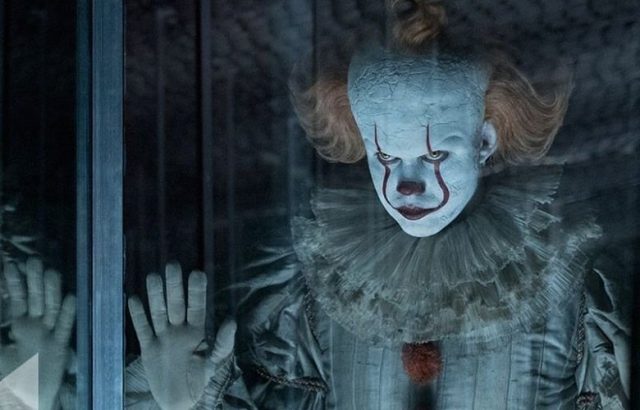
Outside of Skarsgard, McAvoy and Hader, the rest of the performances behind the adult Losers Club, who are the only characters of note in It: Chapter Two, despite its enormous running time, are still overall well-realized, though they definitely don’t achieve the same rich dimensions and appeal as the adult Richie’s and Bill’s characters do. Jessica Chastain feels like the biggest victim here, exacerbating an already rough year from her unfortunate turn as the underwhelming villain in 20th Century Fox’s Dark Phoenix, namely by saddling her with an adult Bev that carries too little personality, at least beyond being, “The girl.” Likewise, while Jack Dylan Grazer’s adult Eddie retains his distinctive neuroses as adult hypochondria, Jay Ryan’s adult Ben has shed his heavy weight to become a fit and handsome architect, and Isaiah Mustafa’s adult Mike is notable for being the only Losers Club member that always remembers the original fight against Pennywise, none of their characters manage to stand out in any meaningful way. This is perhaps a byproduct of such a large and ambitious ensemble, but the cinematic Losers Club definitely felt more consistently fleshed-out and enjoyable as kids, even if some of their adult variations still manage to provide a good amount of effectively rich and compelling character work.
With the original It entirely focusing on the Losers Club as children, during their first encounter with Pennywise back in the 1980’s, It: Chapter Two thus centers around the protagonists after they finally reunite in their hometown twenty-seven years later, now being functional, but somewhat struggling adults who have consciously forgotten about their shared past in Derry. After Mike, the only Losers Club member who stayed in Derry as an adult, and thus the only one who remembers the kids’ former battle against Pennywise, summons his childhood friends back however, the true decisive battle against Pennywise unfolds, with It: Chapter Two encompassing the bulk of the deadly clown monster’s deadly influence on the protagonists, after they’ve grown up.
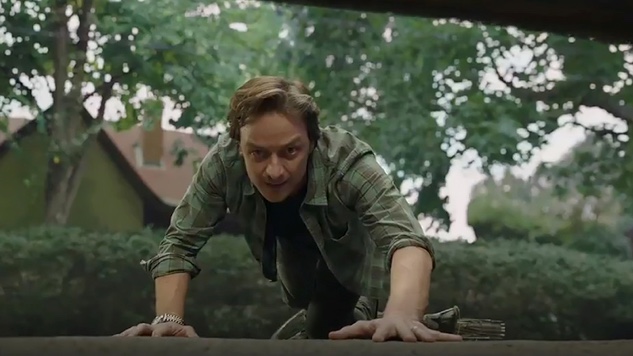
If you’ve read the original novel, or seen the previous ABC miniseries that was adapted from said novel, you already know most of the story progression behind It: Chapter Two. Despite this year’s cinematic remake of Pet Sematary more noticeably changing the storyline, and particularly the climax and resolution of its source novel and prior film adaptation, It: Chapter Two sticks noticeably more closely to Stephen King’s original prose, for better or for worse, even considering the change in time period. The exception of course is the story’s ending, which has been somewhat reworked to be a bit more believable and less out of left field. For what it’s worth, It: Chapter Two also offers the least bad conclusion to the story of Pennywise and the Losers Club as well, even if it’s still not quite a fully satisfying wrap-up, nor one that can fully keep pace with the frequently outstanding terror from much of the original It movie.
This also brings me to the other most noticeable sticking point with It: Chapter Two before audiences even go into it as well, that being its rather absurd runtime. It: Chapter Two clocks in at a bladder-busting 169 minutes long, stretching the conclusion of the Losers Club’s struggle against Pennywise to a nearly three-hour length that, frankly, isn’t totally necessary. Almost a half-hour could have been chopped out of It: Chapter Two, and the story progression likely wouldn’t have been significantly disturbed. Hell, it probably would have improved the pacing too! This overlong runtime is no doubt a symptom of director, Andy Muschietti having a lot of ideas when it comes to exploring the now-grown characters of the Losers Club, even at the expense of the scares. The character writing and direction may largely be good as a result, but it’s done in such a meandering, methodical fashion during this movie’s second act especially that it leaves It: Chapter Two feeling noticeably bloated and disjointed, especially when compared to its more consistently tense and tightly-executed predecessor.
Andy Muschietti returns to direct It: Chapter Two, after also directing the original It movie from two years ago, which is no doubt essential to maintain continuity and style within this two-part storyline. Muschietti’s direction largely retains much of the original It movie’s appeal as well, most notably with its combination of surreal psychological horror, unsettling imagery and surprisingly funny and heartfelt character work. The adult Losers Club don’t feel quite as vulnerable or uncertain as their original childhood selves do, but the direction behind them nonetheless serves as a highlight in It: Chapter Two, thanks to Muschietti diving deep into how the protagonists’ battle against Pennywise during their formative years as children went on to shape them as adults, even sub-consciously.

The fact that all but one of the Losers Club members has consciously forgotten about their experiences growing up in Derry allows Muschietti all sorts of room to really play with his characters’ less-than-ideal futures as well, with many of their battle scars still lingering into the events of It: Chapter Two, even if they’re just out of reach of the protagonists’ memories. Despite this continued strong focus on character however, Muschietti also appears to have exhausted his bag of scary tricks for this sequel, which leaves the horror elements behind his direction more scattershot in their execution for the second trip to Derry. Some legitimately scary and disturbing scenes are still managed in It: Chapter Two, but Muschietti has clearly already burned through this story’s best horror material in the previous movie, leaving his direction attempting to scrape together scares that still somewhat work, but never quite as consistently or potently as they did in the first movie.
Benjamin Wallfisch returns to once again compose the score to It: Chapter Two, after already delivering a nicely creepy and imposing soundtrack for the original It movie. As with the scares in general, the sound design in It: Chapter Two doesn’t quite manage to reach the incredible high points of the original movie’s audio, but it’s still well put together for the most part. Derry still maintains a solid degree of atmosphere, especially when Pennywise is around, with the world of the novel still nicely engrossing audiences, thanks to how well put together the soundtrack is. Even if It: Chapter Two is ultimately less scary than the original, it at least still brings Derry to life very effectively, and feels very distinctly like a well-produced Stephen King adaptation that audiences will easily want to get lost in, with haunting musical flourishes that drip with atmosphere, particularly when the movie starts more earnestly moving towards its climactic confrontation between the adult Losers Club and Pennywise.
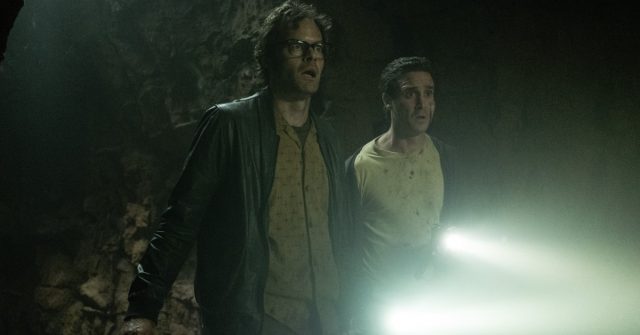
As much as the unsettling music score still does its job nicely, it’s the rest of the sound editing and design that really counts for the most in a horror blockbuster, and fortunately, It: Chapter Two delivers more outstanding audio work here as well. Some of the more effective scares are very well set up and executed through their audio signatures, and while some jump scares sneak in here and there, the movie is not terribly dependent on them, which is no doubt good news for more discerning horror fans. The nail-biting audio work is definitely working overtime to help compensate for the fact that many of this story’s best highlight moments were already used in the original It movie, but for what’s arguably the highest-profile horror movie of 2019, It: Chapter Two’s audio delivers a hair-raising treat for the ears, wringing out far more production value than most garden-variety horror movies.
Now that It: Chapter Two is more directing unfurling the mystery of what Pennywise is and where he came from, among other sinister mysteries in Derry, there’s less of a mystique to the visual design in this sequel. Sure, the atmosphere is still awesome, and Pennywise himself is still a remarkably realized effect, in terms of both the CGI and the practical make-up and wardrobe applied to Bill Skarsgard, but the rest of It: Chapter Two feels like it’s missing something in the visual department. The original It just seemed to hit with more terrifying, creepy punch, with more scares that got under your skin, and more uncomfortable imagery that more actively probed the darkest and most vulnerable reaches of audience imaginations. It: Chapter Two meanwhile quickly feels like it’s struggling to keep pace with that, easily bringing audiences in for the second go-around, but not succeeding at scaring them to quite the same degree.
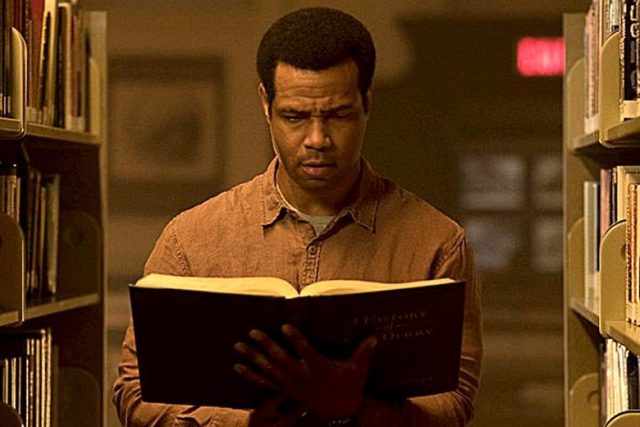
Maybe some of this is down to lost novelty. Now that we know what to expect in a modern big screen adaptation of It, it’s inevitable that audiences likely won’t be quite as scared of the second movie. After all, we now have a clearer idea of Pennywise’s tricks, and that’s before considering the previous novel and miniseries that no doubt already gave audiences an indication as to how this story was going to end. Some of the horror-driven scenes are updated here too, but their success ratio is still quite mixed, with some visually-driven psychological horror moments managing to get the desired effect, while others fall flat, and feel far more run-of-the-mill than they really should. Perhaps some of this also comes down to just how polished and well-produced It: Chapter Two is as well. Because of how glossy It: Chapter Two is, it ultimately lacks the grit and grunge of more niche-driven, lower-budgeted horror movies, which in turn helps to make those movies feel more raw, unpredictable and scary, because they feel less natural and flashy. It: Chapter Two may be a lovely spectacle of a horror movie, but it also definitely feels very ‘Hollywood’, even compared to its predecessor. This leaves audiences with almost no real sense of dread or uncertainty, since the clean, polished visual suite too rarely manages to truly keep viewers on their toes, even if everything looks very nice, and the gripping atmosphere of Derry still manages to effectively seep through all of the Hollywood glamour.
To be quite blunt, It: Chapter Two is ultimately a pretty big let-down, one that noticeably falls beneath its outstanding 2017 predecessor. This sequel may still be far from the worst big screen Stephen King adaptation, especially after we’re barely more than two years out from Sony Pictures’ awful The Dark Tower movie, but It: Chapter Two still doesn’t manage to justify how long and drawn-out it is, nor does it manage to make this return trip to Derry feel fully satisfying in terms of how it portrays the adult Losers Club, or the true origin of Pennywise. Indeed, this second movie having to explain where Pennywise came from sucks out a lot of the mystique and antipathy behind a character that previously felt so unstoppable and menacing. Even Stephen King purists won’t be fully satisfied by It: Chapter Two so stubbornly sticking to even the lesser parts of its source novel as well, since this movie sequel predictably shies away from portraying the most truly ridiculous and comically insane elements from King’s original prose, for want of no doubt desiring to maintain audience-friendliness.
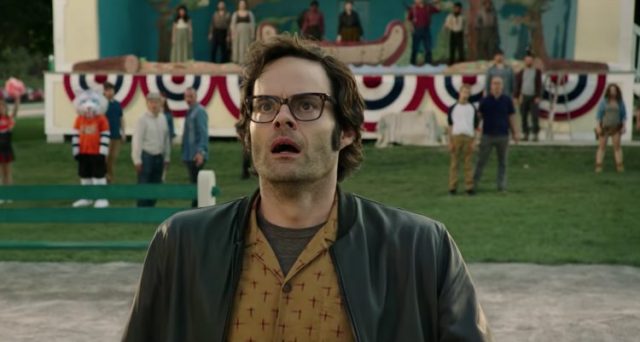
Still, if you enjoyed 2017’s previous It movie, as many did, then It: Chapter Two is certainly not a bad conclusion to the story that the first It movie began. It’s just not all that it deserved to be. Its scares are less potent, its characters are less consistent, and it’s just far too long on top of that. That being said however, the highlight performances, rich atmosphere and technical polish, along with the handful of horror-driven moments that do work, still manage to place It: Chapter Two in the upper echelon of Stephen King adaptations. I suppose, if nothing else, It: Chapter Two was a good opportunity to try and touch up that infamously terrible ending that it so keenly loves to make fun of as well, and at least it managed to do a better job of that than this year’s Pet Sematary remake did, even if the twisted tale of Pennywise still can’t manage to make its resolution feel as unrelentingly spooky as its outset.

